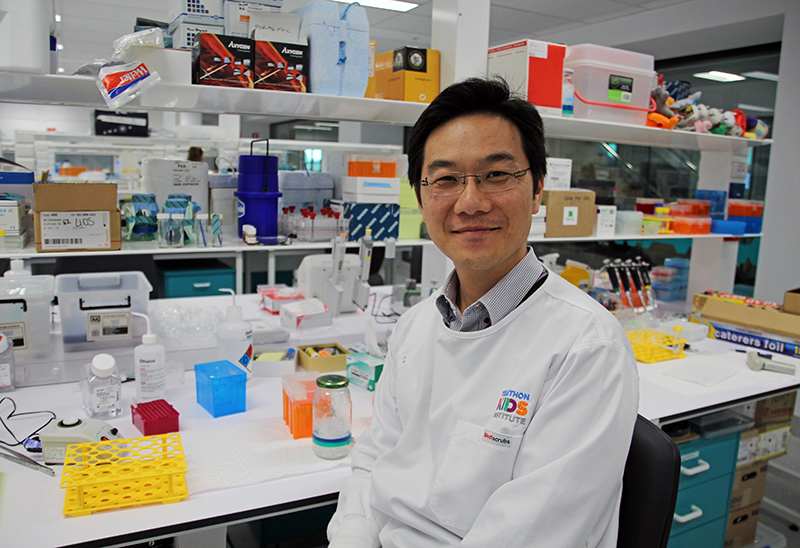Search
Research
Novel BRD4-NUT fusion isoforms increase the pathogenic complexity in NUT midline carcinomaThis study contributes to our understanding of the genetic diversity of NMC, an important step towards finding therapeutic targets for a disease that is...
Research
Molecular characterization of identical, novel MLL-EPS15 translocation and individual genomicAcute Lymphoblastic Leukemia (ALL) occurring in the first year of life is rare.

News & Events
Working to end childhood cancer: A father’s storyDr Laurence Cheung is doing everything he can to end the threat of childhood leukemia. His research has the potential to change countless lives, but he also has another important job – being a dad to three beautiful children.
Research
Novel therapeutics approaches for infants with high-risk infant acute lymphoblastic leukaemiaRishi S. Laurence Sébastien Kotecha Cheung Malinge MB ChB (Hons) MRCPCH FRACP PhD BPharm (Hons) MBA PhD PhD Co-Head, Leukaemia Translational Research
Research
Insights into the Clinical, Biological and Therapeutic Impact of Copy Number Alteration in CancerCopy number alterations (CNAs), resulting from the gain or loss of genetic material from as little as 50 base pairs or as big as entire chromosome(s), have been associated with many congenital diseases, de novo syndromes and cancer. It is established that CNAs disturb the dosage of genomic regions including enhancers/promoters, long non-coding RNA and gene(s) among others, ultimately leading to an altered balance of key cellular functions.
Research
Down syndrome-associated leukaemias: current evidence and challengesChildren with Down syndrome (DS) are at increased risk of developing haematological malignancies, in particular acute megakaryoblastic leukaemia and acute lymphoblastic leukaemia. The microenvironment established by abnormal haematopoiesis driven by trisomy 21 is compounded by additional genetic and epigenetic changes that can drive leukaemogenesis in patients with DS.
Research
ADR3, a next generation i-body to human RANKL, inhibits osteoclast formation and bone resorptionOsteoporosis is a chronic skeletal condition characterized by low bone mass and deteriorated microarchitecture of bone tissue and puts tens of millions of people at high risk of fractures. New therapeutic agents like i-bodies, a class of next-generation single-domain antibodies, are needed to overcome some limitations of conventional treatments.
Research
Psychosocial Outcomes in Parents of Children with Acute Lymphoblastic Leukaemia in Australia and New Zealand Through and Beyond TreatmentParents of children with acute lymphoblastic leukaemia (ALL) experience emotional distress throughout their child's treatment course. This study describes the psychological experience of Australian and New Zealand parents of children diagnosed with ALL.
Research
Interactions between acute lymphoblastic leukemia and bone marrow stromal cells influence response to therapyTo identify links between drug resistance and gene deregulation we used oligonucleotide microarray technology.
Research
Influence of wild-type MLL on glucocorticoid sensitivity and response to DNA-damage in pediatric acute lymphoblastic leukemiaRearrangement of the mixed-lineage leukemia gene (MLL) is found in 80% of infant acute lymphoblastic leukemia (ALL) and is associated with poor prognosis and re
